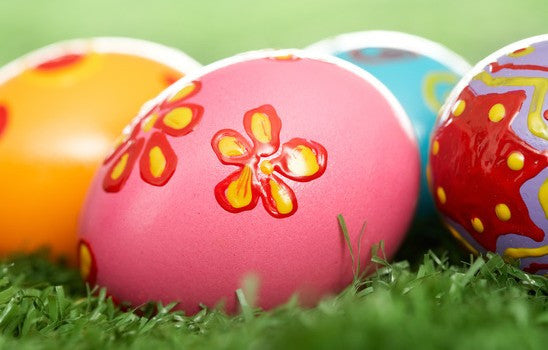
Article Detail
20 Mar
Easter in Scotland shares much in common with the festival in other countries. There are, however, a number of Easter traditions which those outside of Scotland may never have heard of. In this article we’ll examine how the Scots celebrate Easter, with a particular focus on what makes an Easter especially Scottish.
Food
As in most Christian countries, the main meal on Easter Sunday consists of roast lamb. There are several reasons for this – some religious, some more practical. The Judeo-Christian tradition has long been enamoured with the idea of sacrifice. This goes back to the very early chapters of the bible, in which God orders Abraham to kill his son, Isaac. Later came the Passover, when God spared the Jews of Egypt the death penalty he inflicted on the firstborn son of every Egyptian.
Jews celebrate the Passover at around the time of the vernal equinox, by eating a meal of roast lamb. This tradition was almost certainly continued by later Jewish converts to Christianity, whose lineage ultimately spread to Scotland.
The history does not end there. Christian teaching refers to Christ as the ‘Lamb of God’ – which refers to pre-Christian customs, such as pagan rites of spring, in which lambs were traditionally sacrificed in order to ensure a good harvest.
But perhaps the most important reason for eating lamb, historically speaking, is one of practicality; lamb is just coming to season during Easter time and so Easter has traditionally been used to demark the first lamb of the year.

A popular dish in Scotland away from Lamb is Roast Venison. Venison is a fantastically lean, dark meat. It is a great option for a special Easter menu, the sweetness of the root vegetables perfectly complements the rich Venison meat.
Egg Rolling
Next we come to a more recognisably Scottish institution – Easter egg rolling. This activity consists, to put it broadly, of painting an egg and rolling it down a hill, (or, if you don’t have access to a hill, across a suitable grass lawn). It has long been performed, traditionally, on Easter Monday.
Fortunately, most Scots have access to at least a shallow incline. Those who have had the good fortune to visit rural Scotland will know that it is blessed with a profusion of rolling hills and valleys. Small wonder that the tradition of egg rolling came about in such a landscape – there are so many surfaces for an egg to roll down! Only a narrow range of slopes are appropriate for egg rolling – too steep and the egg will smash to smithereens, too shallow and it will not roll at all. Consequently, half the challenge of egg rolling consists of selecting a suitable hill.
Participants in this long-established custom compete against one another to see whose egg can travel the greatest distance without breaking. Since eggs are fragile and of a slightly irregular shape, this is more difficult than it sounds! For this reason, eggs are often boiled before being rolled, in order that they retain their strength.
Eggs can be decorated according to the whims of the egg-roller in question; traditionally, this is done using different coloured paints. In bygone times, before coloured paint became widespread, eggs were decorated using onion skin, which would turn a translucent golden brown when boiled.
Egg rolling was originally practiced in imitation of the movement of the sun and in Scotland was also practiced in the Beltane rights. In Christian times, it came to represent the rolling away of the stone from the tomb of the risen Christ.
In many Scottish villages, almost everyone turns out to stake their claim to be crowned champion.

Other traditions
While egg-rolling is the most recognisably Scottish of all Easter traditions – being as it did, in all likelihood, originate in Scotland – several more widely practiced traditions have found their way north of Hadrian’s wall.
Easter egg hunts, for example, have come to enjoy the same popularity in Scotland as they have elsewhere. The same is also true of competitive egg-painting. Like egg-rolling, these activities are most often enjoyed by children, but there is no reason that fully grown adults cannot also join in the fun.
Another, perhaps more long-standing tradition is the lighting of bonfires. Like many Christian peoples, Scots traditionally light bonfires as part of their Easter celebrations. This occurs almost always on the Saturday before Easter Sunday (and after Good Friday).
In Europe, and in Scotland, an effigy of Judas was traditionally burned on the fire – but this particular practice has fallen out of favour in Britain, where it has long been supplanted by the practice of burning Guy Fawkes in November.
 Free delivery on orders over £20
Free delivery on orders over £20






